How an Investment in Green Technology Can Pay off for Today’s Homeowner


Studies continue to show that real estate buyers are willing to pay a substantial premium for homes that feature highly efficient, environmentally friendly “green energy” technology.
While the added value depends on the location of the home, its age, and whether it’s certified or not, three separate studies all found that newly constructed, Energy Star- or LEED-certified homes typically sell for about nine percent more than comparable, non-certified new homes. Plus, one of those studies discovered that existing homes retrofitted with green technologies, and certified as such, can command a whopping 30-percent sales-price boost.
Options include technologies that you may already be very familiar with, as well as some new breakthroughs that may surprise you:
Fuel cells
Fuel cells may soon offer an all-new source of electricity that would allow you to completely disconnect your home from all other sources of electricity. About the size of a dishwasher, a fuel cell connects to your home’s natural gas line and electrochemically converts methane to electricity. One unit would pack more than enough energy to power your whole home.
Past fuel cells have been far too expensive and unreliable. But Redox Power Systems, a company that’s planning to launch its first fuel cell later this year, is using new materials, claims they’ll be able to cut the purchase price by 90 percent, and predicts the associated electricity-bill savings will allow homeowners to pay off that purchase price in just two years’ time.
Wind turbine
A wind turbine (essentially a propeller spinning atop an 80- to 100-foot pole) collects kinetic energy from the wind and converts it to electricity for your home. And according to the Department of Energy, a small version can slash your electrical bill by 50 to 90 percent.
But before you get too excited, you need to know that the zoning laws in most urban areas don’t allow wind turbines. They’re too tall. The best prospects for this technology are homes located on at least an acre of land, well outside the city limits.
Cool roof
Cool roofs keep the houses they’re covering as much as 50 to 60 degrees cooler by reflecting the heat of the sun away from the interior, allowing the occupants to stay cooler and save on air-conditioning costs. The most common form is metal roofing. Other options include roof membranes and reflective asphalt shingles.
Green roof
Another way to keep the interior of your house cooler—and save on air-conditioning costs—is to replace your traditional roof with a layer of vegetation (typically hardy groundcovers). This is more expensive than a cool roof and requires regular maintenance, but young, environmentally conscious home owners are very attracted to the concept.
Hybrid heating
Combining a heat pump with a standard furnace to create what’s known as a “hybrid heating system” can save you somewhere between 15 and 35 percent on your heating and cooling bills.
Unlike a gas or oil furnace, a heat pump doesn’t use any fuel. Instead, the coils inside the unit absorb whatever heat exists naturally in the outside air, and distributes it via the same ductwork used by your furnace. When the outside air temperature gets too cold for the heat pump to work, the system switches over to your traditional furnace.
Geothermal heating
Geothermal heating units are like heat pumps, except instead of absorbing heat from the outside air, they absorb the heat in the soil next to your house via coils buried in the ground. The coils can be buried horizontally or, if you don’t have a wide enough yard, they can be buried vertically. While the installation price of a geothermal system can be several times that of a hybrid, air-sourced system, the cost savings on your energy bills can cover the installation costs in five to 10 years.
Solar power
Solar panels capture light energy from the sun and convert it directly into electricity. For decades, you may have seen these panels sitting on sunny rooftops all across America. But it’s only recently that this energy-saving option has become truly affordable.
In 2010, installing a solar system on a typical mid-sized house would have set the homeowner back $30,000. But today, that price has been slashed to an average of just $19,000. Plus, some companies are now offering to rent solar panels to homeowners (the company retains ownership of the panels and sells the homeowner access to the power at roughly 10 to 15 percent less than they would pay their local utility).
Solar water heaters
Rooftop solar panels can also be used to heat your home’s water. The Environmental Protection Agency estimates that the average homeowner who makes this switch should see their water bills shrink by 50 to 80 percent.
Tax credits/rebates
Many of the innovative solutions summarized above come with big price tags attached. However, federal, state and local rebates/tax credits can often slash those expenses by as much as 50 percent. So before ruling any of these ideas out, take some time to see which incentives you may qualify for at dsireusa.org and the “tax incentives” pages at Energy.gov.
Regardless of which option you choose, these technologies will not only help to conserve valuable resources and reduce your monthly utility expenses, but also add resale value that you can leverage whenever you decide it’s time to sell and move on to a new home.
Open Ranch With The Potential To Expand
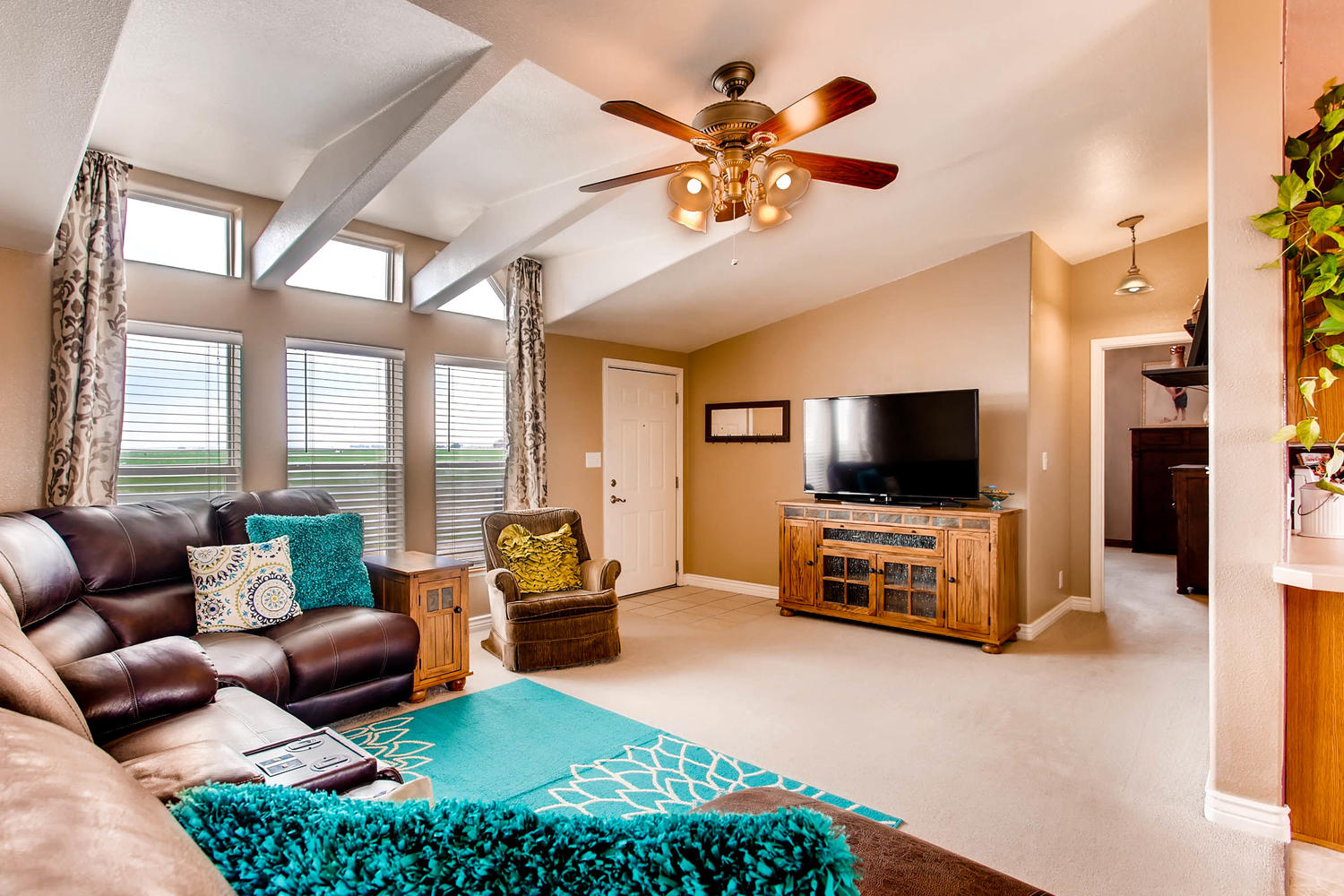
Featuring 3 Bedrooms, 2 Bathrooms And Over 71 Acres!
https://www.youtube.com/watch?v=7QH6YEH0rl8
Don’t miss out on this beautiful, open ranch style home with a full, unfinished basement for your future expansion. 71+ acres w/ an over-sized detached garage/shop for projects, double-sided 2000+ sq. ft. barn with heat and water. Steel corrals for the livestock, chicken coops, lean to and large outdoor recreation area! Acreage has 4.75 irrigation wells that require an augmentation plan. Domestic well provides water to the home, numerous garden areas and corrals. Call for your personal tour today!
For more information, please visit: http://windermerenoco.com/listing/66352508. You may also call Jennifer Cuningham or Susan Ruff at (970) 460-3033.
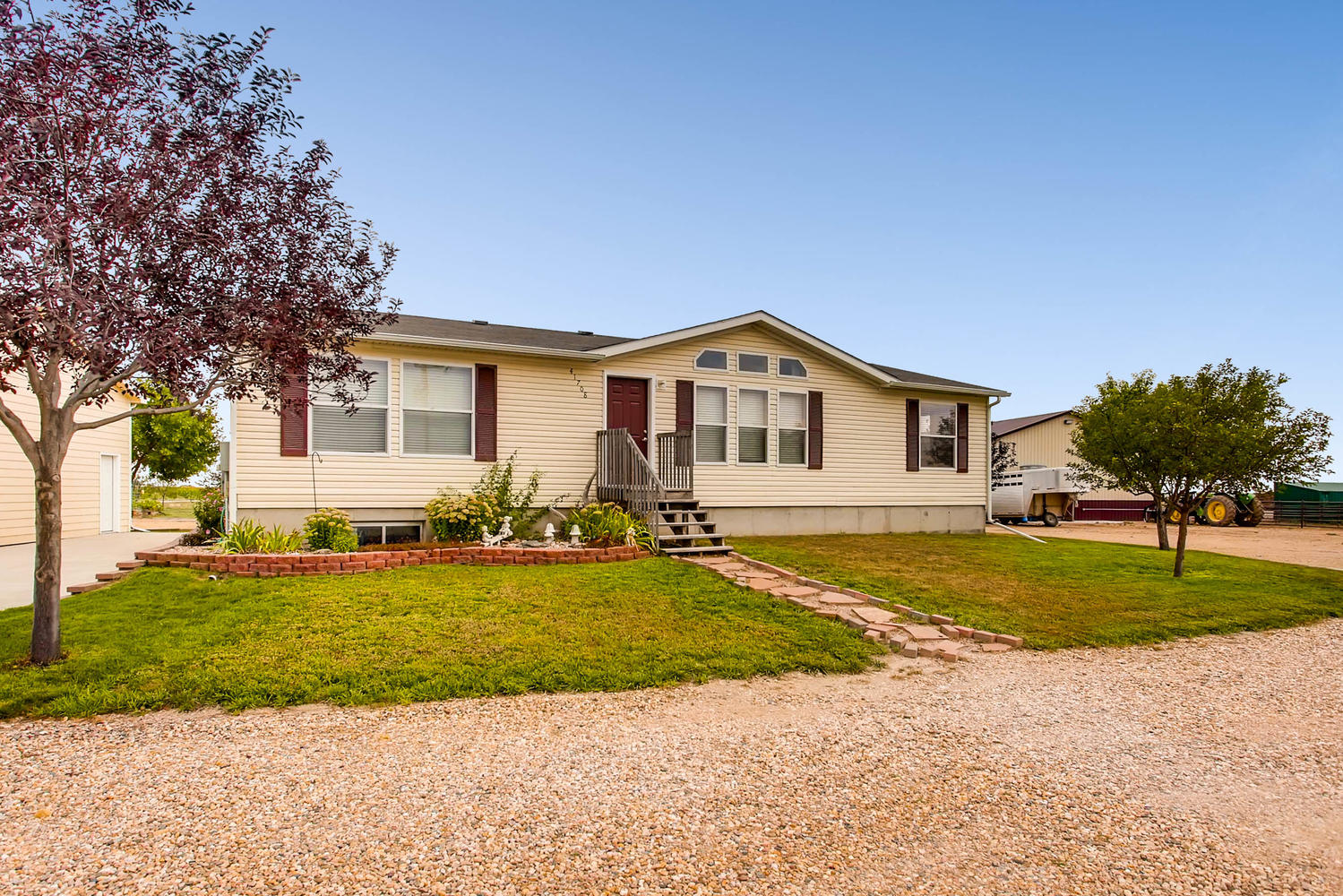
Windermere Foundation Has Donated Nearly $1,000,000 This Year!

Thanks to the generosity of Windermere agents and the community, the Windermere Foundation collected over $903,500 in donations through the second quarter of 2017. This is an increase of 10 percent compared to this time last year! Individual contributions and fundraisers accounted for 62 percent of the donations, while 38 percent came from donations through Windermere agent commissions. So far, we have raised a total of $34,009,527 in donations since 1989.
Each Windermere office has its own Windermere Foundation fund account that they use to make donations to organizations in their communities. Year to date, a total of $979,486 has been disbursed to non-profit organizations dedicated to providing services to low-income and homeless families throughout the Western U.S.

One organization that has been the recipient of Windermere Foundation funds is the League of United Latin American Citizens (LULAC) National Scholarship Fund. LULAC has considered education its number one priority since it was established in 1929. The scholarship fund was established in 1975 to provide scholarships to help Hispanic youth in underserved communities make the dream of college enrollment a reality. Former recipients of LNSF scholarships are now leaders in fields of business, science, government, and education. A rigorous selection process assures the expectation that future recipients will demonstrate the same level of excellence.
Last year, the Windermere office in Salinas, CA supported LULAC’s scholarship fund with a $1,000 donation, and will be making this donation annually. Christopher Barrera, Realtor and President of LULAC Salinas Council #2055, says “I am proud to be associated with such a great organization like Windermere Valley Properties in Salinas, and it’ll be an honor to present a check to LULAC on behalf of Windermere and the Windermere Foundation.” Each year, the LULAC Salinas Council holds a Black & White Ball to raise money for the scholarship fund. Monies raised are matched by LULAC national. There were 14 scholarships awarded in 2016. Thanks to the $15,000 raised through their event, matching funds from LULAC national, and a donation from the Windermere Foundation, they will be awarding 39 scholarships at a presentation ceremony on July 29 in Old Town Salinas.

Generous donations to the Windermere Foundation over the years have enabled Windermere offices to continue to support local non-profits like LULAC. If you’d like to help support programs for low-income and homeless families in your community, please click on the Donate button. To learn more about the Windermere Foundation, visit http://www.windermere.com/foundation.
#YourStoryIsOurStory: Taking the Time to Make the Right Move
When Gordy was offered a promotion, he and his wife Linda would need to relocate and give up their custom home. It wouldn’t be easy, but lucky for them, they found Windermere Real Estate agent, Dawn Hardman. Over the course of a year, Dawn and Linda spent a lot of time together. Dawn took on the role of host to her new clients, touring dozens of homes, and teaching them everything she knew about Skagit County, Washington, so when they finally made their move, they could do so confidently.
When another unexpected move came up, Linda and Gordy called on Dawn to help them sell their home. In short notice, over a holiday weekend, Dawn made sure their open house was a success with her creative ideas and personal touch.
It rarely takes a full year to find a dream home, but Dawn is glad she had a chance to spend so much time with Linda and Gordy. In doing so, she helped them get familiarized with a new area, while also learning more about the place she loves and calls home.
Throughout the year we will be posting some of our favorite #YourStoryIsOurStory videos, photos, and blog posts. Please take a minute to share your experiences and follow #YourStoryIsOurStory on our blog, Facebook, Twitter, Instagram, YouTube, and Pinterest pages.
Why aren’t home builders building more homes?
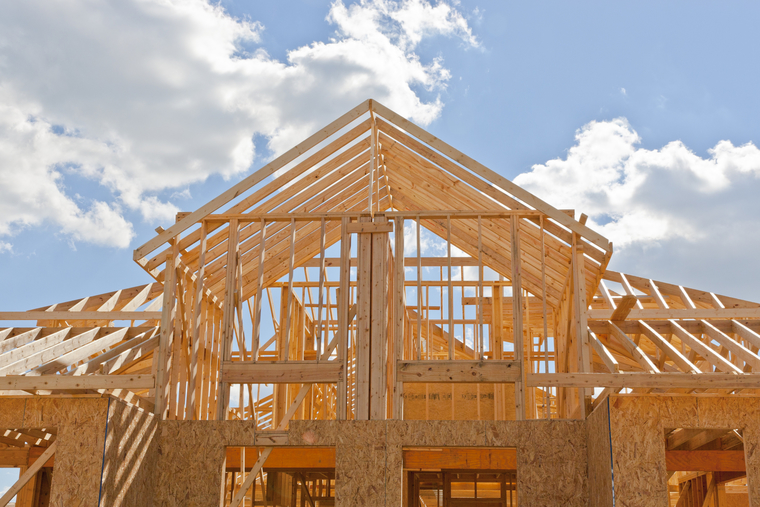

This article originally appeared on Inman.com
Housing markets all across the U.S. are suffering from serious shortages of homes for sale, and this isn’t expected to change in the foreseeable future.
When I think about inventory levels and the fact that demand is clearly outstripping supply, it makes me question why home builders aren’t stepping up to the plate to meet all this pent-up demand.
Interestingly enough, there are several obstacles holding builders back that I think are worthy of further discussion.
According to my calculations, since 2008, builders have started construction of new single-family homes at an average annual rate of about 594,000 units per year. For context, the average annual rate of new-home starts between 1963 and 2007 was over 1.1 million, so we have been behind the ball for some time now.
Although new-home starts have now risen to 835,000 units from the historic low of 353,000 units that we saw in 2009, we are still well below the level that meets demand given new household formations.
Since 2009, new housing supply has consistently fallen short of new housing demand. The shortfall was the largest in 2011 at 465,000 housing units, and cumulatively through 2015, the total shortfall was 2.2 million housing units.
Currently, I estimate that the amount of housing supply necessary to just keep pace with demand is probably around 1.1 million housing units a year; however, housing completions as of May were running at an annual rate of just 817,000 — far below what is needed.
So why is this? The simple answer is that it is very expensive to build a new home.
The expense of building a new home can be essentially broken down into three components: land, labor and materials.
Land
Let’s start with land, which is expensive, and it is very expensive in markets where land availability is scarce (either because of unique topography or political limitations — or both).
This is further exacerbated in markets where the economy is growing rapidly and attracting more new residents.
Another hindrance is the cost of obtaining a building permit, which is remarkably high, thanks to government regulations, and can account for almost 25 percent of the final price of a new single-family home.
Labor
The second thing to consider is labor. As the housing market was entering the Great Recession, many construction workers were laid off and have not subsequently returned.
In fact, my calculations indicate there are currently over 200,000 job openings in the construction industry, and this lack of supply combined with high demand for labor, has led to rising labor costs.
Material costs
Finally, material costs. The cost of homebuilding materials have risen by almost 5 percent due to high demand and low supply. Everything from the copper used in wiring to the lumber used for framing, continues to escalate at fairly rapid rates.
All of this combined makes it very expensive to build homes — especially affordable homes.
In fact, the National Association of Homebuilders stated back in 2015 that it is difficult to build a home anywhere in America for less than $300,000. Then take into account that only 4 percent of all new homes sold in 2016 were priced below $150,000, and in the Western U.S., just 6 percent were priced below $200,000.
Conditions are particularly tight at the more affordable end of the market, clearly reflecting the fact that fewer entry-level homes are being built.
Between 2004 and 2016, completions of smaller single-family homes (under 1,800 square feet) fell from nearly 500,000 units to only 136,000. Similarly, the number of townhouses built in 2016 (98,000) was less than half the number started in 2005.
It is clear that we need more housing solutions to address the shortages out there, but it won’t be easy.
From a builder’s perspective, they cannot change material costs, nor can they force workers into the construction industry.
However, what they can do, and what needs to be done, is try and shift government policy to better address permit fees, hookup fees, impact fees and the like. If these costs could be lowered, I believe that many builders would have the ability to ramp-up activity in a fairly dramatic fashion.
Given how important increasing the supply of new homes is to the long-term health of the market, I hope that the efforts being undertaken at the national level by the NAHB, and the local level by various homebuilder associations, start to see positive results in the near future.
For the sake of our housing market, we need to make it easier for builders to do what they do best: build homes.
How to Combat the 5 Most Common Remodeling Monkey Wrenches
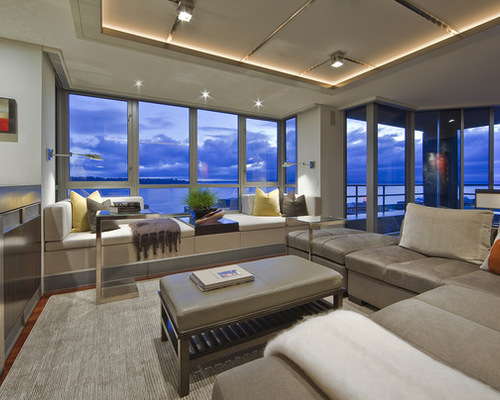
There’s a lot to think about, select and organize on a remodeling project, whether it’s a single room or a whole-house remodel. Small projects often have the same list of tasks as big projects, and the same potential for material selection and delivery to throw your schedule for a loop. Of course, anything can go wrong during a remodel, but some parts of your remodel will cause more difficulty than others.
Here’s what you should keep an extra-close eye on as you’re planning your remodel.

Monkey Wrenches 1: Garret Cord Werner Architects & Interior Designers, original photo on Houzz
1. Windows and exterior doors. Window decisions can be some of the most difficult in a project. Windows come in a variety of materials and colors, with hardware in different styles and colors and even an array of screen options. They also have wildly varying lead times. Vinyl windows can arrive in as little as two weeks, while some wood-clad and solid wood windows can take 10 weeks or more to arrive.
Generally, your contractor will install your windows before interior work takes place. And exterior trim and siding can’t be installed before the windows, so they can have a big schedule impact if they don’t arrive on time.
Best practice: Select your window brand early in the process, use the lead time to count backward from when the windows need to arrive and then finalize the order with your contractor at least two to three weeks ahead of that ordering deadline. Confirming things like jamb size, tempering, energy code compliance, egress, obscured glass selection and more can lengthen the process.

Monkey Wrenches 2: Ventana Construction LLC, original photo on Houzz
2. Cabinets. Similar to windows, cabinets affect a wide range of tradespeople who are lined up to work directly after their installation. Flooring, tile and countertop installations are all linked to the casework in kitchens and baths. Ordering cabinets requires multiple layers of design and selection, including decisions on the layout of the room; the function of doors, drawers and hardware; wood and paint; and crown molding. A field measure is also necessary.
Expect a floor plan and drawings showing how your cabinets will look straight on with complete measurements (also known as shop drawings). You’ll need to approve these before production can start.
Best practice: Narrow down the wood species and general style of the cabinets early on so that the biggest decisions are out of the way. Knowing the lead time from the cabinet shop is critical, and it doesn’t hurt to add an extra week to that to make sure your cabinets will arrive in time.
Related: How to Set Up Your Cabinets for the Best Storage

Monkey Wrenches 3: ART Design Build, original photo on Houzz
3. Plumbing fixtures. All of today’s retail and online plumbing fixture stores make it seem like getting plumbing fixtures in time for an installation is easy. It often is, but some fixtures and manufacturers have factory lead times and limited availability.
Shower valves and bathtubs are the two elements you usually need for a plumbing rough-in. The rough-in could happen the first week of a bathroom remodel or a couple of months into a larger project. The rest of the fixtures can come late, but selecting these two ahead of time will make it easier to get the rough plumbing in correctly. If you’re using stone or another solid-surface counter that has an undermount sink, you’ll need to have the sink and faucet onsite during the template process.
Best practice: Don’t wait until the bitter end to choose your plumbing fixtures. If you do, at least one is bound to not show up when you need it, or to come with an exorbitant cost for overnight delivery.

Monkey Wrenches 4: Contemporary Bathroom, original photo on Houzz
4. Tile. When you select tile, you have to consider more than just aesthetics. You also need to make sure that the material you select has all the pieces necessary for installation (bullnose, pencil liner etc). Consult your architect and the tile setter if you’re not sure what you need. Still, sometimes the tile that arrives isn’t quite right. On one of our recent bath projects, one of the selected tiles was switched for another material because the colors of the delivered tile were not as expected. The dimensions and colors may not exactly match the sample you saw in the showroom, particularly with natural stone and slate. But even factory-made tile can vary from one lot to another.
Best practice: Try to get a sample from your local tile supplier’s warehouse to make sure the stock that will be delivered is what you expect.

Monkey Wrenches 5: Noel Cross + Architects, original photo on Houzz
5. Flooring. The thickness of a flooring material affects many things, including the rough carpentry work that happens at the start of a project. If you want your floors to “plane out” (not have transitions up or down), making a definitive flooring decision is critical.
Many flooring materials, like wood and Marmoleum, have a lead time for arrival. Then these materials need to acclimate and adjust to the ambient temperature and humidity in the house. If flooring is installed without acclimating, it can expand or contract, causing gaps or bulging in the flooring. Usually four to five days are enough, but some products need two weeks of acclimation.
Carpeting can go in without acclimating at the very end of the project. However, interior millwork is installed in different ways, and there are different orders depending on whether you choose carpeting or some other flooring material.
Best practice: Choose your flooring before your project starts so that your contractor can make the surfaces plane out, and so that lead and acclimation times are not an issue.
6 Clever Ways to Disguise Trash Bins
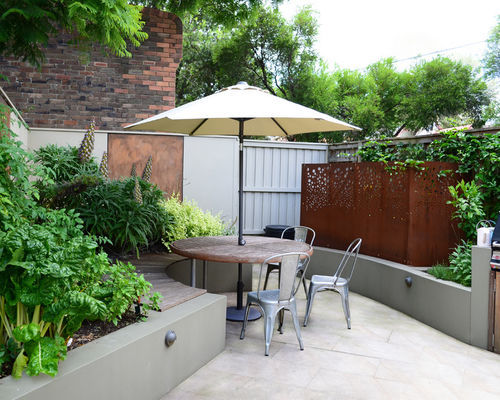
You probably don’t give much thought to your garbage cans, other than remembering to put them out on the right day. But we all have to store our trash and recycling bins somewhere, and doing so can be a challenge on a smaller property, especially if you don’t want them to be an eyesore. If you’re struggling to find a stylish way to store your bins, check out these smart and inspiring ideas. Now, is it black or green bin day this week?

Garbage Bins 1: Outhouse Design, original photo on Houzz
Choose a screen. The curved screen in the corner of this courtyard is an attractive feature in its own right, thanks to the decorative cutwork pattern, and offers an elegant way to hide ugly plastic bins from view.
By using a screen like this, you can section off as much of the garden as you need — to store bikes or garden equipment as well as bins. To blend in the structure even further, you could grow climbers up and over the screen or along the wall behind.
Related: Outdoor Chairs to Entertain in the Garden

Garbage Bins 2: London Front Gardens, original photo on Houzz
Create a brick shelter. Built in red brick to match the house, and tiled with slate, this practical storage area blends with the property’s exterior and actually enhances the space with its character and interest. The look is mirrored in the raised bed at the front of the drive for a coordinated finish.
A custom compartment on the left neatly houses the bin, while two smaller storage compartments on the right make room for stacking recycling boxes.

Garbage Bins 3: Fenton Roberts Garden Design, original photo on Houzz
Make it part of the garden. The aim of this front garden design was to create a wildlife haven, and rather than see the bins as an unsightly obstacle to be hidden away, the owners decided to make them integral to the design.
They created a sturdy wooden structure with a living roof that works as an extension of the garden and is planted with wildlife-friendly flowers and foliage.
Related: Create a Wildlife Haven With a New Bird Bath

Garbage Bins 4: Beertje Vonk Artist, original photo on Houzz
Design it into an outbuilding. In a larger space, an open-sided outbuilding like this one is ideal for storing and hiding bins. It’s painted a heritage shade and is partly screened in front with evergreen topiary to create a visually appealing feature — a great way to smarten up a drab drive.
This idea would complement a traditional or cottage exterior, but if your style is more contemporary than country, you could choose a sleeker style, or paint it a darker shade to tie in with the exterior of your home.

Garbage Bins 5: Kate Eyre Garden Design, original photo on Houzz
Tuck it into a border. Can you spot the trash bins on this drive? They’re neatly tucked away in the wooden box to the left of this image, and the impact of the structure has been much reduced by positioning it in a decorative floral border and planting low standard trees right alongside it.
The structure also has a green roof planted with succulents to further disguise the box and make it as visually appealing as possible.

Garbage Bins 6: The Honest Scot, original photo on Houzz
Build a clever storage wall. If space is limited, why not make your recycling containers work extra hard by turning their storage area into a boundary wall, as these smart homeowners have. This neat wooden shelter screens the bins from the road while creating a clean, contemporary-style wall.
Why Owning a Home is Such a Smart Investment


After succumbing to the “Great Recession” ten years ago, the stock market has made a comeback. So, does that mean you should forget about buying a new house and invest in stocks instead? The answer to that question, say experts, depends on your investing savvy, your financial discipline, your age, and your current financial situation.
The first question you need to ask yourself is, “Am I disciplined enough to invest in stocks?” According to two professors who recently studied 30 years of personal-finance performance, you need to be someone with exceptional financial discipline if you want to earn real money in the stock market. Or, you could simply buy a house.
When you buy real estate, the down payment and monthly mortgage payments force you to set aside a significant amount of your earnings on a regular basis. It’s automatic. But if you can’t summon the same discipline to invest that same amount of money in the stock market on an equally regular basis, then stocks are probably going to be a losing proposition, according to the professor’s study.
“We find that if people don’t invest all the money, actually about 90% of the time, you’re better off buying real estate,” says Professor Eli Beracha, co-author of the study.
Other issues that make stock investing risky
Investing guru James Altucher wrote a column in The Wall St. Journal titled, “8 Reasons You Stink at Trading Stocks.” In it, he argues that most non-professionals don’t have the investing savvy required to be successful in the stock market. Here are a few telling excerpts:
- “Nine out of 10 people think they are above-average drivers. Nine out of 10 people think they are above-average investors. Both are mathematically impossible.”
- “Most people sell at the bottom and buy at the top—the opposite of what you want to do as an investor—because they let emotions get in the way of patience and strategy.”
- “It’s really hard to own stocks. It’s not just picking a stock and watching it go up 1,000%. It’s buying it and sometimes watching it go down 80% before it ends up rising 20% above your purchase price. It’s waiting. It’s patience. Psychology is at least 80% of the game. And knowing when to sell? Even harder.”
Age matters
When you’re young, many financial advisors encourage investing in things like individual stocks. With a long career ahead, you have time to wait for any bad investments to turn around before you may really need the money. But once you’re a little older, with a family, and starting to focus on your financial future, that’s when advisers recommend you buy things like real estate—a conservative investment with a long history of stable, predictable earnings.
The type of loan you choose also makes a difference
If you want to both own a home and invest in stocks, consider a 30-year home loan, which will significantly reduce your monthly payments and leave you with extra money for playing the market. (Just remember the tradeoff: You’ll end up paying thousands of dollars more in interest over the life of the loan.)
If you don’t have a burning desire to play the stock market, choose a 15-year home loan. You’ll pay less interest over the life of the loan, you’ll build equity faster, and, obviously, you’ll be mortgage-free 15 years sooner.
The tax advantages of owning real estate
As a homeowner, you’re entitled to a bevy of tax benefits you don’t get as a stock investor. You can deduct your mortgage interest and property taxes from your annual tax return. Plus, depending on your circumstances, you could also get a deduction or credit for any home-office expenses, moving expenses, capital gains, any “points” used to lower your interest rate, and more.
One caveat: investing in real estate takes time
No matter what some of those reality TV programs show, buying a home should not be viewed as a get-rich-quick scheme. But if you think you’re ready to put down roots for as long as seven years, chances are very good that any home you purchase will appreciate significantly during that time (even if the economy runs into some bumps along the way).
The non-financial benefits
Of course, not all of the benefits of owning a home are financial. For most Americans, their home is a source of tremendous pride, comfort, security and freedom. Most of us also use our homes to showcase our personality, through paint colors, furnishings, landscaping, yard signs, holiday decorations and so much more.
Yes, the stock market is on an upswing currently (depending on the week), but if you want an investment with a long-term track record of consistent returns—plus tax breaks and a variety of personal perks—you may want to buy a home instead.
If you have questions about the buying or selling process, or are looking for an experienced agent in your area, connect with us here.
Colorado’s Home Price Appreciation Rankings

New Rankings
Check out the FHFA recap video here:
Here is the data straight from FHFA’s report:
U.S. house prices rose 1.6 percent in the second quarter of 2017 according to the Federal Housing Finance Agency (FHFA) House Price Index (HPI). House prices rose 6.6 percent from the second quarter of 2016 to the second quarter of 2017. FHFA’s seasonally adjusted monthly index for June was up 0.1 percent from May.
The HPI is calculated using home sales price information from mortgages sold to, or guaranteed by, Fannie Mae and Freddie Mac. FHFA has produced a video of highlights for this quarter.
Significant Findings
- Home prices rose in 48 states and the District of Columbia between the second quarter of 2016 and the second quarter of 2017. The top five states in annual appreciation were: 1) Washington 12.4 percent; 2) Colorado 10.4 percent; 3) Idaho 10.3 percent; 4) Florida 9.4 percent; and 5) Utah 9.2 percent.
- Among the 100 largest metropolitan areas in the U.S., annual price increases were greatest in the Seattle-Bellevue-Everett, WA (MSAD), where prices increased by 15.7 percent. Prices were weakest in New Haven-Milford, CT, where they rose by 0.1 percent.
- Of the nine census divisions, the Pacific division experienced the strongest increase in the second quarter, posting a 2.6 percent quarterly increase and a 8.9 percent increase since the second quarter of last year. House price appreciation was weakest in the Middle Atlantic division, where prices rose 0.8 percent from the last quarter.
Source: FHFA
6 Ways to Personalize a White Kitchen
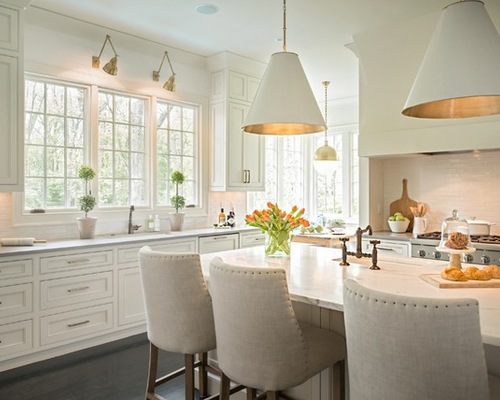
White-on-white kitchens have been a classic look for many years. Why does this trend endure? For starters, white connotes cleanliness, makes small spaces appear larger, and brightens rooms that are naturally dark.
Although many all-white kitchens are just lovely, some can appear a bit stark or cold. To help clients warm up their white, I recommend a variety of strategies, such as mixing metals and adding contrasting paint, fabric or wood. Read on for inspiration for personalizing your white kitchen so that it stands out from the crowd.

White Kitchen 1: Allard Ward Architects, original photo on Houzz
1. Warm metal accents. Copper, bronze, brass and polished nickel are just a few of the metals that can warm up an all-white kitchen. The gold sconces above the window and the white pendant lights, with their subtle hint of gold, add warmth and a touch of luxury to this all-white kitchen.
Related: Kitchen Lighting in Copper, Bronze, Brass, and Nickel

White Kitchen 2: GIA Bathroom & Kitchen Renovations, original photo on Houzz
2. Color and metal. Moving beyond metallics alone, a single contrasting color when combined with metals can create drama in a white kitchen. In this photo, a modern white kitchen intermingles black pendants and countertops with gold seating. This combination contributes to the room’s sleek contemporary look.

White Kitchen 3: Orchid Newton Ltd, original photo on Houzz
3. Wallpaper. I love wallpaper, especially in kitchens. Wallpaper can introduce color, movement and dimension to a white kitchen. When applied to a lone wall, wallpaper can create a dynamic focal point, as shown in this photo. The bright white cabinets and crisp white walls are softened by the shades of blue in the fish swimming on the side wall. This kitchen’s under-the-sea motif is enhanced by the blue tile on the back wall and the sea urchin-shaped pendant lights.

White Kitchen 4: IS Architecture, original photo on Houzz
4. Colorful island. Wood-stained islands often appear in white kitchens because of the richness and contrast they bring. This kitchen shows a creative alternative, pairing a chartreuse island with a chartreuse Roman shade. Together they lend a whimsical, personalized feel. To give your white kitchen a personal touch, consider painting your island your favorite color.

White Kitchen 5: Mosaic del Sur, original photo on Houzz
5. Tile rug. Layering in a rug is a great way to introduce color and texture to an all-white kitchen, but some clients worry that a rug could be an added source of dirt as well as a possible tripping hazard.
This clever kitchen resolves both issues with a tile rug instead of a fabric one.

White Kitchen 6: Hindley & Co, original photo on Houzz
6. Backsplash. A tile backsplash also can bring color and texture to your white kitchen. But who says a backsplash must be tile? This kitchen has a counter-level window in lieu of a tile splash. The window faces a luscious succulent garden, thus creating a green vista for an otherwise monochromatic kitchen.
 Facebook
Facebook
 X
X
 Pinterest
Pinterest
 Copy Link
Copy Link
